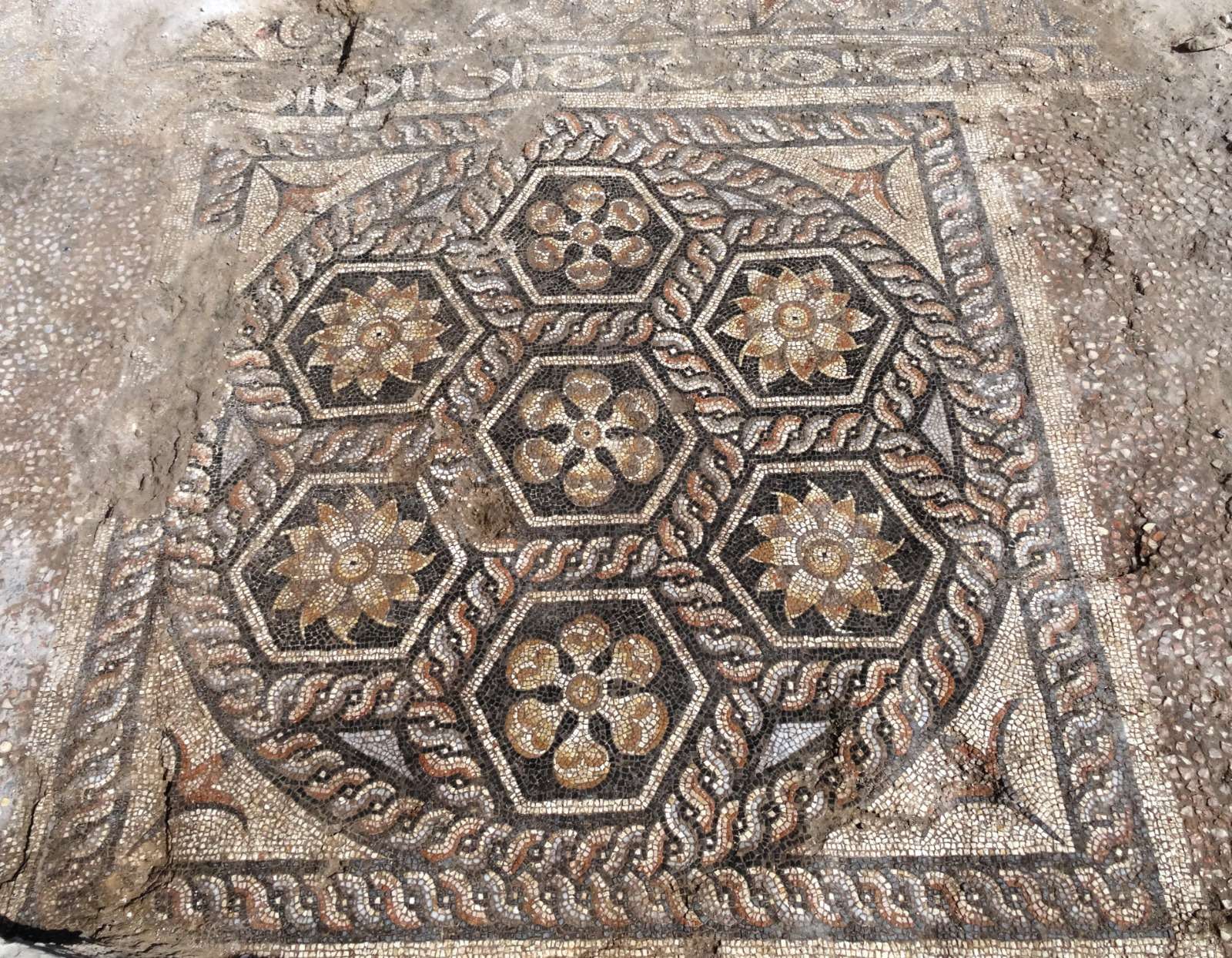The Egyptian-Polish Archaeological Mission affiliated to the Polish Center for Mediterranean Archeology of University of Warsaw, Poland, working in the area of the ruins of Kom El-Dekka in Alexandria, succeeded in uncovering remains of a large part of an ancient town dating back to the 4th to the 7th century AD.
The mission also uncovered a collection of Roman mosaics covering the floor of a town house.
Dr. Mustafa Waziri, Secretary General of the Supreme Council of Antiquities, said that the area of Kom El-Dekka in Alexandria is once again the place of a new of multi-colored Roman mosaics, which confirms the spread of mosaics in Alexandria as well as proves richness of the inhabitants of these houses.
The discovered mosaic was set to be shown in the Villa of Birds at Kom El Dekka, which is the first museum of mosaic floors in Egypt.
Dr. Ayman Ashmawy, head of the Egyptian Antiquities Department at the Ministry of Antiquities, said that the discovered town houses remains of a small theater, a large imperial bathroom and a unique collection of 22 lecture halls, which are thought the remains of an old university.
Dr. Gregor Maherke, head of the joint Archaeological Mission, pointed out that the mosaic design was the floor of one of the houses is a square surface of 2.60 m x 2.60 m.
It consists of six hexagonal panels featuring a lotus flower, encircled by a typical circular frame.
The design was prominent in the dining rooms of the Roman houses and is considered distinctive to the Alexandrian style.
It mirrors the famous formations that characterize Egypt in the Roman epoch.

Dr. Maherk said that the Polish Archaeological Mission has been operating at the site located in the heart of the old city since 1960 in cooperation with the Egyptian Ministry of Antiquities.
Excavations in recent years have been focused on the study of residential architecture, which is still somewhat unknown in Alexandria from the 1st century to the 3rd century AD.
It was known that buildings of that period were often lavishly decorated.
He explained that discovering of this season is the best proof of this.
Contributed by Ahmed Moamar







